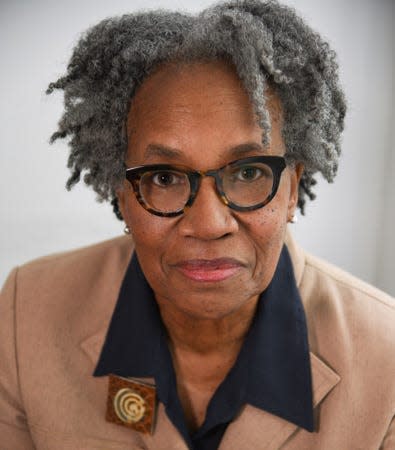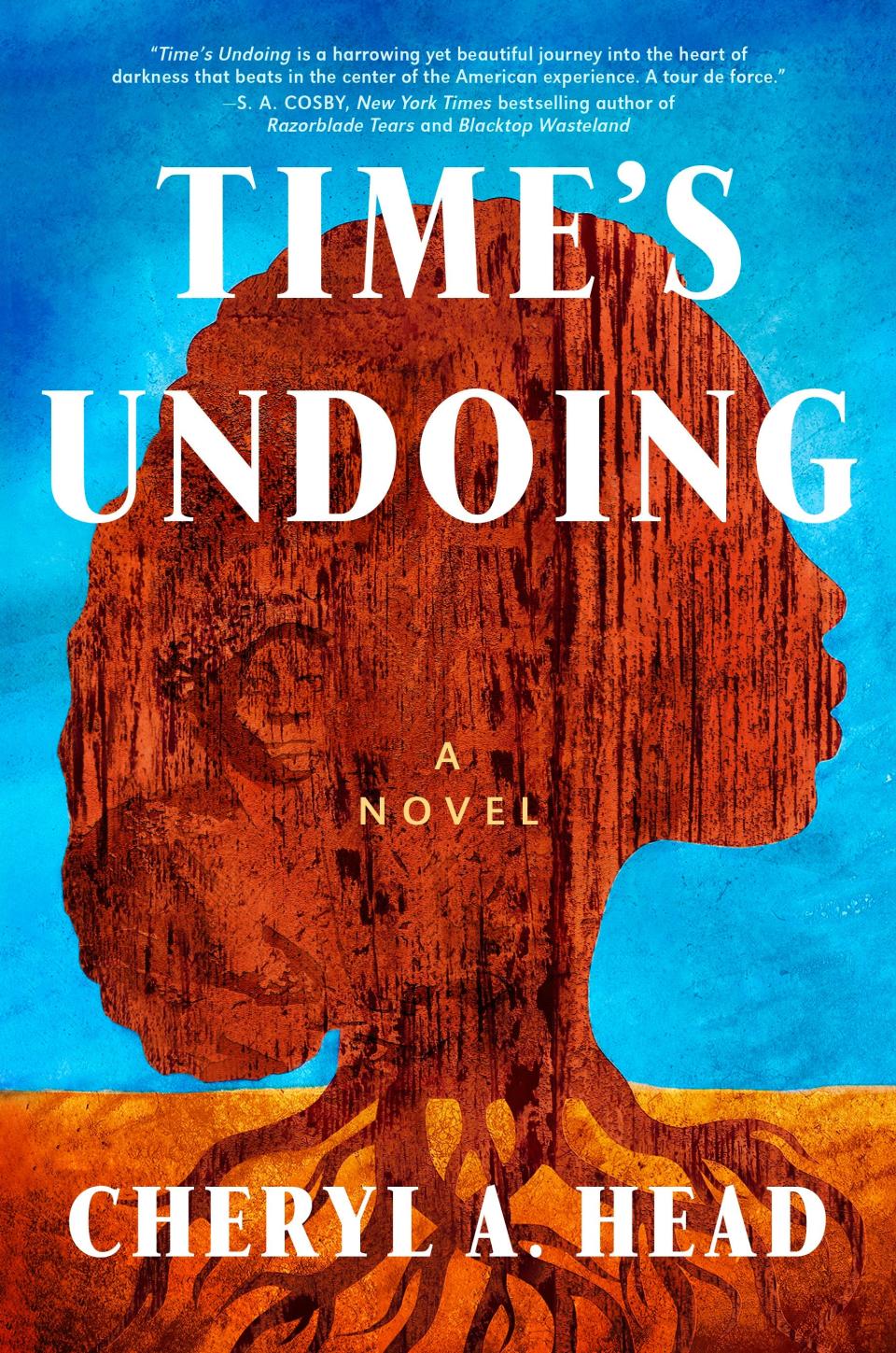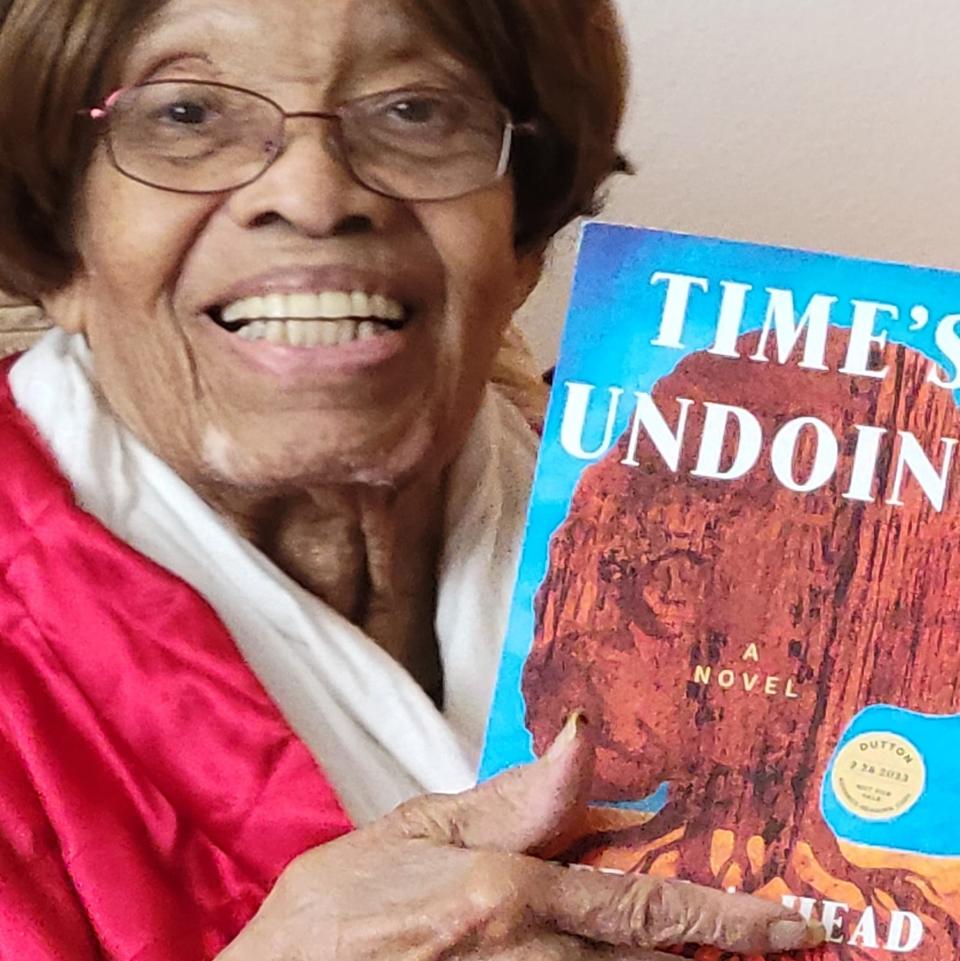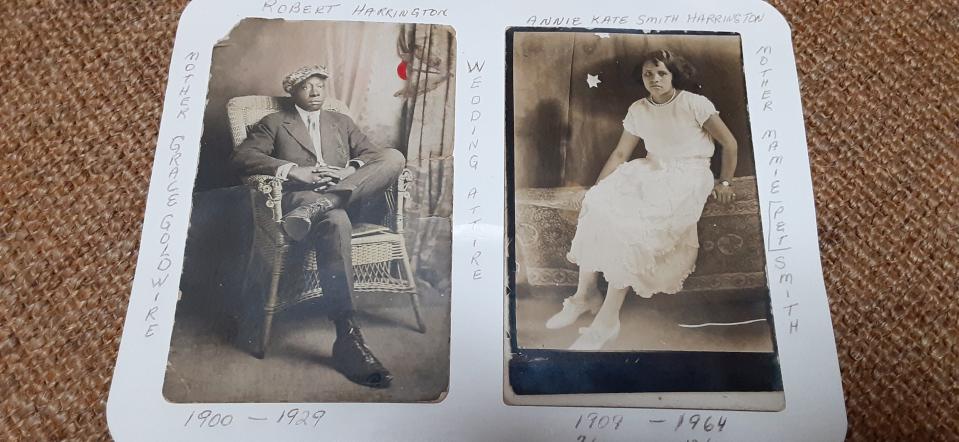Detroit author's novel on racism's toll inspired by tragedy in her family
Blending history with mystery, “Time’s Undoing” explores the impact of racist violence on two different eras of one Black family.
In 1929, a talented carpenter moves his pregnant wife and young daughter from St. Petersburg, Florida to Birmingham, Alabama to pursue a new job. His success at work, like his sleek new car, makes him a target of resentful white co-workers, while his occasional visits to a gambling house wind up putting him in the path of a corrupt police detective.
In 2019, a Detroit Free Press reporter travels to Birmingham to cover the Black Lives Matter movement in terms of systemic racism. Her assignment -- and personal mission -- is to find answers to her great-grandfather’s murder at the hands of law enforcement, a death that resonates 90 years later with the protests of current generations.

Author Cheryl A. Head’s suspenseful interweaving of past and present throughout the novel has drawn praise from National Public Radio, which noted, “The parallel narratives work with poignancy and righteous rage. So many decades gone, so few inroads made into the racism at the foundation of United States history.” OprahDaily called it “one of 2023’s hottest releases,” while mystery writer Tracy Clark said Head “gives readers a visceral look at the human cost of hate and fear and both heart and wings to redemptive peace.”
More: Michigan Notable Books 2023: 20 great reads that tell stories of the Mitten
More: 'Super Cities! Detroit' mixes facts with fun in children's book by hometown author
It’s the sort of book you don’t want to put down – and you can’t forget once you’re finished. The carpenter from 1929 who prompts the Free Press investigation in 2019 is named after Head’s own grandfather, Robert Harrington. Like his fictional counterpart, he, too, was killed by the Birmingham police.
The cover art for “Time’s Undoing” reveals just how deeply Head’s novel echoes the trauma of her family’s loss. Embedded inside the silhouette of a woman in profile is the image of her real-life grandfather’s face.

Born and raised in Detroit, Head grew up hearing her relatives talk about her late grandfather. “It was a story always around us, sort of in the background,” she says. “We heard it every year at holidays, Thanksgiving and Christmas. My mother and my grandmother, who would often visit from Florida and come to Detroit, would talk about Grandpa.”
While details about him were passed down through these conversations, specifics about his death were scarce. “We still don’t know where he’s buried, if or when he was buried,” says Head. “That’s hung over us a long time.”
Head is the writer of the Charlie Mack Motown Mystery series and has earned awards and recognition in literary and mystery circles for what has become her thriving second career. The Wayne State University alum, who worked at several Detroit media outlets including Detroit Public Television (where she was a reporter, producer and vice president of production), had moved to Washington, D.C. and was a member of senior management for the Corporation for Public Broadcasting by the time she started writing fiction immersed in themes of diversity and inclusion.
More: Detroit author Aaron Foley's novel could be Amazon Prime's next big TV series
More: Novel by Elmore Leonard about Detroit homicide cop to be adapted for FX series
More: 'I was really low': Kem's inspiring journey from despair to R&B stardom
While involved with outreach funding for the 2007 Ken Burns docuseries about World War II, “The War,” Head became interested in telling more about the role of Black soldiers, based on what she had heard from her father. That led to her first novel, “Long Way Home,” which depicted the lives of some of those soldiers serving in a segregated army that mostly kept them on the homefront and away from overseas combat.
From there, she turned to "something fun" and, because of her love of mysteries, wrote the first Charlie Mack Motown Mystery, which grew into a series of six books with distinctly Motor City themes and settings. One of them centers on a possible attack on the Detroit Auto Show. Another is about a hate group in Oakland County that’s committing crimes on mosques, synagogues and Black churches.

Head says she and her mother, Willie Mae McGarrah, had long talked about writing her grandfather’s story and which of them should do it. She admits that without knowing exactly what had happened to him, she wasn’t sure how to approach such a project. But after George Floyd’s murder in May 2020 by a Minneapolis police officer, she couldn’t wait anymore.
“I remember just thinking to myself I’m writing grandpa’s story. I’m writing it now,” says Head, who began with the 1929 portions of the book, which are done in first person from Harrington’s point of view.

Head consulted her mother, then 92, and made notes about the things that had been verbally passed down about Harrington. She found the only photograph that her family had of him, which was taken on his wedding day, and kept it with her, next to her laptop, when she was writing.
“There were a couple of times I would run into a brick wall, and I literally felt my grandfather’s nudge to point me in a certain direction,” she says.
One of Head’s turning points in her writing process was adding another main character, a contemporary figure who would be relatable to the multitudes of young people marching to protest Floyd’s death. “I thought who would have the heart and spirit and tenacity to tell that kind of story? A young journalist,” she says.
The character, Meghan McKenzie, brings a millennial perspective to the novel and gives Head a chance to describe some of her own research efforts. As Meghan does in the book, Head spent countless hours scouring newspaper archives and relying on Newspapers.com in order to read as many Birmingham newspapers of the late 1920s as possible, particularly three Black newspapers from that time that had been digitized and were “vitally important” to her descriptions of daily life in Black communities of that era.
“Looking at the want ads, looking at the personal ads and the social notices and the advertisements for piano lessons and cars and clothing and groceries, it really helped me to inculcate what those daily activities might be," she explains.
The time-consuming search paid off, both for her novel and with a dramatic discovery. After doing a Google search of her grandfather’s name and combing through tens of thousands of entries, she found an item about her great-grandfather’s death in the St. Petersburg Times, the mainstream newspaper of his hometown.
The impact of that moment was profound. “When I found that newspaper article, I remember stopping for half an hour, crying, reading it again, crying. And then I went out to my partner, who was in the patio and said, ‘I found proof that my grandfather was killed by Birmingham, Alabama police.’ We’d never had that in my family. Never had that in 90 years,” she says.
Her next call was to her mother. “I said, ‘Mom, I found proof of what you’ve been telling us all of these years.’” With the actual date of her grandfather’s death confirmed, Head also was able to find his death certificate and learn devastating details like the fact that he had been shot multiple times in the torso and chest. Eventually, Head wound up using the St. Petersburg Times item about Harrington almost word for word in the novel.
Creating a fully-rounded, if fictional, portrayal of her grandfather in “Time’s Undoing” was a balancing act for Head that required combining family lore with her own imagination. “I remember thinking, I don’t want him to be a perfect man, because this is not an ode to him. I gave him flaws that may or may not have been true. I had heard that he was a haughty man, so I knew that. Proud guy. Always had a fancy car, liked fancy clothes, so I had that. Loved his family. I had those memories”
Head took care to find a place for love and joy within both timelines. She expanded Meghan’s narrative, which is largely devoted to her difficult, eventually dangerous assignment, to include a tender romance with a handsome city official, Darius, and two supportive friendships with women, a Black activist, Monique and a white public library archive director, Kristen, who faces her own reckoning in the book.
In a similar vein, Head recounts the happiness that Harrington experiences with his wife and daughter and the kindness they received from friends and neighbors as newcomers to Birmingham. Says Head, ”So many of our stories are immersed in misery and the hardships of our lives, especially back in those days. But I wanted to talk about the resilience of Black families, the resilience of Black communities ... even in the midst of this horrible segregation and prejudice."
In August, Head plans to go on a book tour in the South that will include a stop at the public library in Birmingham. It's been out since February, and her biggest fan, and potentially toughest critic, already has weighed in.
Did her 95-year-old mother – the little girl, Mae, from the 1929 narrative -- read the book? ”Oh my goodness, yes!,” says Head warmly. She recalls how how excited her mom was about the project and how she she would prod her daughter to keep working. Recalling how they listened to the audiobook version together earlier this year, Head says, “She was enthralled by that.”
Head’s novel is a testament to Black families and is dedicated to two people in her family tree. “To Willie Mae McGarrah, Mama, this story is infused with your memories and perseverance,” she writes. “To Robert Harrington. I never knew you until I did.”
Contact Detroit Free Press pop culture critic Julie Hinds at jhinds@freepress.com.
This article originally appeared on Detroit Free Press: In 'Time’s Undoing,' Detroit author echoes murder of her grandfather

